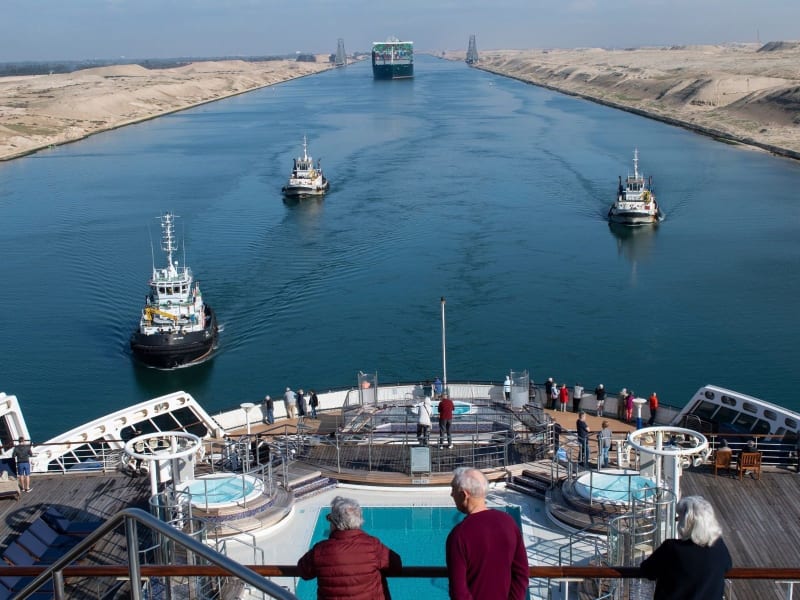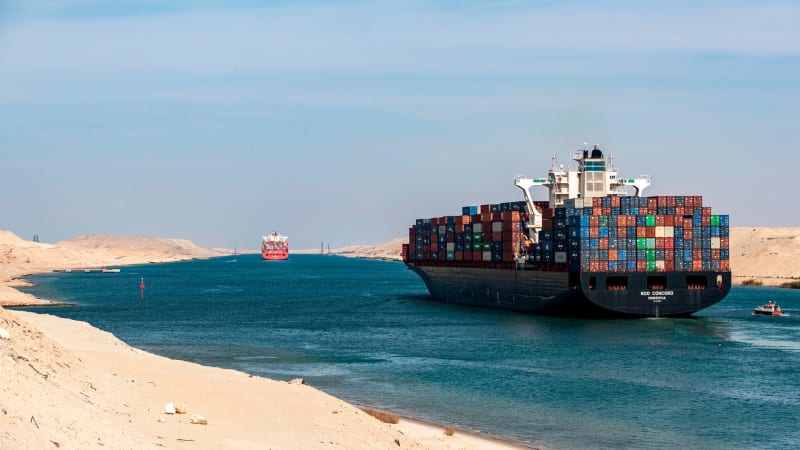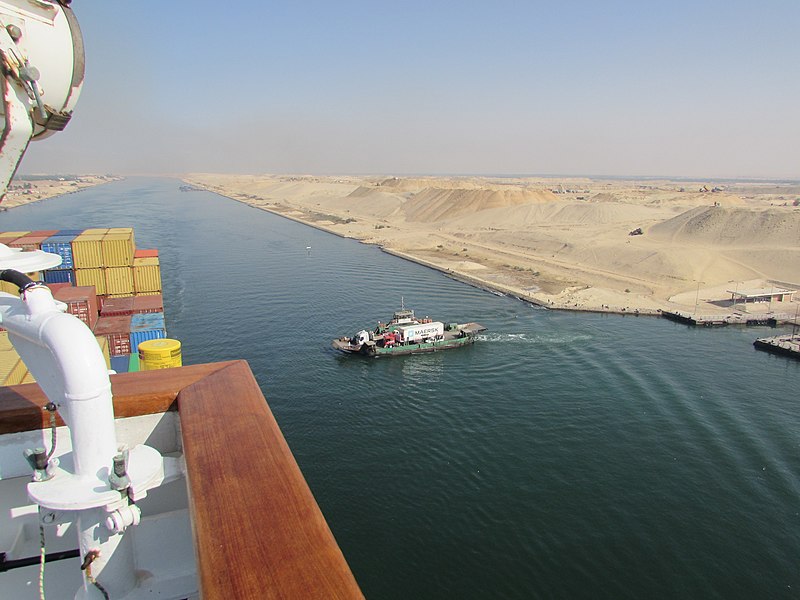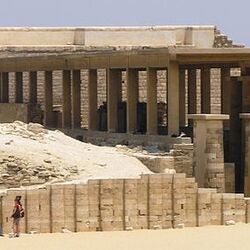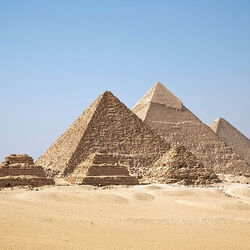Suez Canal
The Suez Canal is a man-made navigable space connecting the Mediterranean Sea with the Red Sea and separating Africa from the Asian part of the Eurasian continent. It was founded in 1869, although the idea of linking the above-mentioned seas belonged to the pharaohs. Since 2015, navigation has been carried out in two parallel directions, which increases the number of navigable water transport to 100 daily.
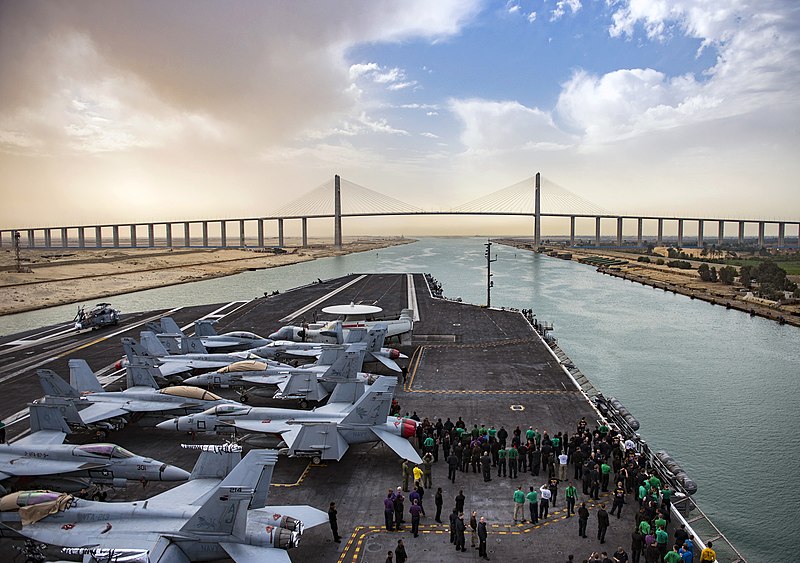
The 193.3 km long canal is the largest waterway. The Suez Canal is not only an important transport route, but also a historical monument. In the 19th century, French engineer Ferdinand de Lesseps was able to successfully complete the project. However, the construction of the canal was associated with great difficulties and sacrifices. More than 120,000 workers participated in the construction of the canal, and about 20,000 of them died.
The Suez Canal is the main transport route for ships transporting oil, gas and other goods between Europe and Asia. The channel also allows you to reduce the delivery time of goods and reduce the cost of transportation. Thanks to this, many countries around the world gain access to necessary goods and resources.
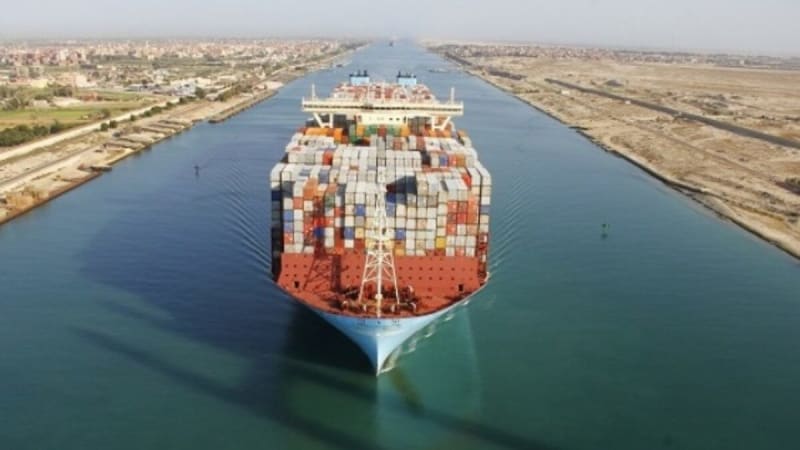
The Suez Canal not only brings economic benefits, but is also an important destination for tourism. Many tourists visit Egypt to see this historical monument and take a boat ride along the canal. In addition, the canal is an important venue for international sailing competitions.
Climatic features
The course of the Suez Canal varies depending on the time of the year. In winter it rushes north, in summer it rushes south. The highest water temperature is +28 in August, the lowest is +17 in January and February. The water in the channel is quite transparent at a high degree of salinity, visibility is 200 m. As a result of the lack of flowing rivers and the very hot subtropical climate, it is highly susceptible to evaporation. The Mediterranean type of air prevails, with an average temperature above 20 degrees Celsius in January and over 30 degrees in July.
Flora and fauna
Since the Suez Canal was created by man, its own flora and fauna is naturally absent. Everything that grows and lives in it is shaped by active marine migration processes. The southern zone is represented by colorful corals, fish and sea urchins. There are more algae than animals on the north side. There are more than 500 species of fish, and octopuses, lobsters, squid and crabs live here. In spring, migrating birds of prey can be observed over the canal - griffins, burial grounds, steppe eagles.
The war over the Suez Canal
However, the Suez Canal has also become an object of conflict and tension. On July 26, 1956, the Suez Canal was nationalized by the President of Egypt. Soon, troops from France, Britain and Israel attacked Egypt, which led to the week-long Suez War. The Egyptians blocked the canal, sinking 47 ships in it, and the canal was calculated only on April 24, 1957. UN troops were deployed to maintain the neutral status of the Sinai Peninsula.
Already in 1967, the channel was closed due to the Six-Day War. In 1973, during another military conflict, the Egyptians took back the Sinai Peninsula and the Suez Canal. After the canal and the approaches to it were cleared by the forces of the USA and the USSR, navigation along it was restored in 1975.
In 2015, Egypt began construction of an expansion of the canal to increase its capacity and shorten the passage time for ships. This project was successfully completed in 2018 and allowed for a 30% increase in the number of ships passing through the canal.
The Suez Canal is an important facility for the global economy, tourism and security. It is a historical monument and a symbol of technological progress. The Channel continues to play an important role in global trade and the economy, and its importance will only grow in the future.
